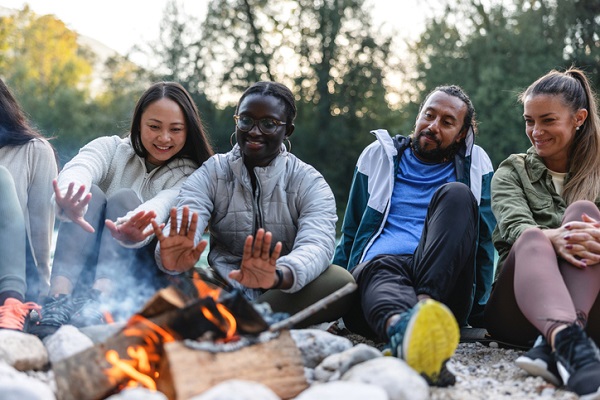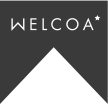For many, physical activity is a well-known way to improve health and combat chronic disease. With February being Heart Health Month, it serves as a reminder to prioritize regular physical activity—not just during the month of February, but as a consistent part of daily life. While most know they should be more active, barriers (such…
Your Welcoa membership has expired.
Campfire Experiences for Connection
While many recognize the problem that loneliness presents for organizations, and also desire stronger connections with their professional colleagues, much work needs to be done to create the conditions for forming meaningful relationships. Organizational leaders must actively dedicate time and create spaces where conversation and connection can thrive—but what strategies can they rely on?
In a special Art & Science of Health Promotion Conference interview webcast, “Ignite Connection: Building Stronger Communities With Campfire Experiences,” author Charles Vogl, M.Div., emphasizes the need for community and reliable strategies to create valuable connections at work.
From Loneliness to Belonging
The U.S. Surgeon General’s Office has declared a loneliness epidemic, with less than half of Americans reporting that they have more than four close friends. Eight percent reported having no close friends. In addition to this lack of intimacy, many are experiencing what Vogl calls a “crisis of belonging” or feeling lonely even among crowds. If we want to solve this problem, allowing employees to connect and therefore perform in ways that matter, we need to explore time-tested ideas that naturally facilitate community.
Inviting Employees to the Party
Vogl defines a community as a group of people who “share mutual concern for one another.” Naturally, it takes time for people to connect in this way. It is important for organizational leaders to consciously and continuously make time for employees to start building friendships with each other, and it all starts with an invitation. This does not mean you need to send formal, personalized invites in the mail. But the invitation should be a clear request to attend a connection event, and employees should believe the organizer cares whether they show up. This is key—If it appears no one cares that they attend, you’ve only sent out an announcement, not an invitation.
If you want to host successful connection events, ensure that nothing else competes with the building of friendships, and do not make the mistake of hoarding your employees for one big event, like an annual gathering. Small things count just as much; scheduled lunches, nature walks, even fifteen-minute conversations before a session during a conference all work toward building strong, meaningful relationships among colleagues.
Campfire Experiences
The context necessary for connection is the tried-and-true campfire. While most of us cannot huddle around a campfire during our workday, we can apply the basic elements of this practice to create campfire experiences. The foundational elements of a campfire experience are physical proximity, freedom and focus. Physical proximity means that you are close enough to the others at the “campfire” to have possibly intimate conversations, and freedom means that you feel able to have the conversation you desire. Focus simply means removing all conditions that will distract from the conversation. With campfire experiences, it is important to give space and permission for participants to step in and share. Do not feel pressure to “entertain” the whole time or micromanage. Most of your work is accomplished with a proper invitation and creating an event that employees want to attend.
This campfire experience model translates well for virtual environments as well. Remove distractions by not creating a traditional “agenda” for your meeting (perhaps focusing conversations on a broad prompt) and by communicating the need for space and time with invitees. Vogl notes that the key for these meetings is to create small breakout groups of five or fewer people, citing the application of Brooks’ Law to lines of communication. Any group larger than five will be too much to manage for effective conversation.
Resources
Attend Charles Vogl’s Intensive Training Seminar and keynote session at the 35th Annual Art & Science of Health Promotion Conference and visit charlesvogl.com to learn more.
The Wellness Alliance in partnership with the International Foundation of Employee Benefit Plans present the 35th Annual Art & Science of Health Promotion Conference from March 31-April 4 in Scottsdale, Arizona.
Become a member to view webinar recordings. Register for upcoming live events here: https://www.welcoa.org/training/.
ABOUT THE CONTRIBUTOR REBECCA PLIER // PR/Communications Specialist • IFEBP
Rebecca Plier is diving headfirst into the wonderful world of employee benefits and workplace wellness. As a PR/Communications Specialist at the International Foundation, a partner organization of the Wellness Alliance, Rebecca shares essential information on educational programming, emerging benefits research data, member resources, and so much more. To maintain balance, she enjoys art journaling and attending regular yoga sessions.





